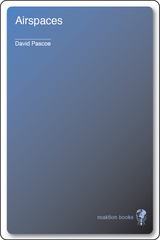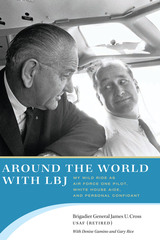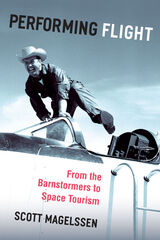
At the hub of this exclusive enclave, which rises from the runway to an altitude of several thousand feet and which calmly accommodates the dangers of take-off and landing procedures, lies the airport – the concrete manifestation of airspace. The airport is a locale of anxiety and chance where, in order to expedite air traffic, authority is absolute, time is relative and liberties are always taken.
David Pascoe's wide-ranging book blends personal observation with detailed discussions of social history, air accidents, landscape, architecture, politics, aesthetics, literature and film to provide a striking account of the airport as a unique space and singular form of modernity, a place fundamental to any accurate sense of what we are now, and where we are going.
"eclectic and intelligent ... a thought-provoking analysis"—Financial Times
"the scope of Mr Pascoe’s rumination is impressive"—The Economist

When Lyndon Baines Johnson wanted to go somewhere, there was no stopping him. This dynamic president called for Air Force One as others summon a taxi—at a moment's notice, whatever the hour or the weather. And the man who made sure that LBJ got his ride was General James U. Cross, the president's hand-picked pilot, top military assistant, and personal confidante. One of the few Air Force One pilots to have a position, simultaneously, in the White House, General Cross is also the only member of LBJ's inner circle who has not publicly offered his recollections of the president. In this book, he goes on the record, creating a fascinating, behind-the-scenes portrait of America's complex, often contradictory, always larger-than-life thirty-sixth president.
General Cross tells an engrossing story. In addition to piloting Air Force One around the globe, he served President Johnson in multiple capacities, including directing the Military Office in the White House; managing a secret two-million-dollar presidential emergency fund; supervising the presidential retreat at Camp David, the president's entire transportation fleet, and the presidential bomb shelters; running the White House Mess; hiring White House social aides, including the president's future son-in-law, Charles Robb; and writing condolence letters to the families of soldiers killed in Vietnam. This wide-ranging, around-the-clock access to President Johnson allowed Cross to witness events and share moments that add color and depth to our understanding of America's arguably most demanding and unpredictable president.

READERS
Browse our collection.
PUBLISHERS
See BiblioVault's publisher services.
STUDENT SERVICES
Files for college accessibility offices.
UChicago Accessibility Resources
home | accessibility | search | about | contact us
BiblioVault ® 2001 - 2024
The University of Chicago Press









